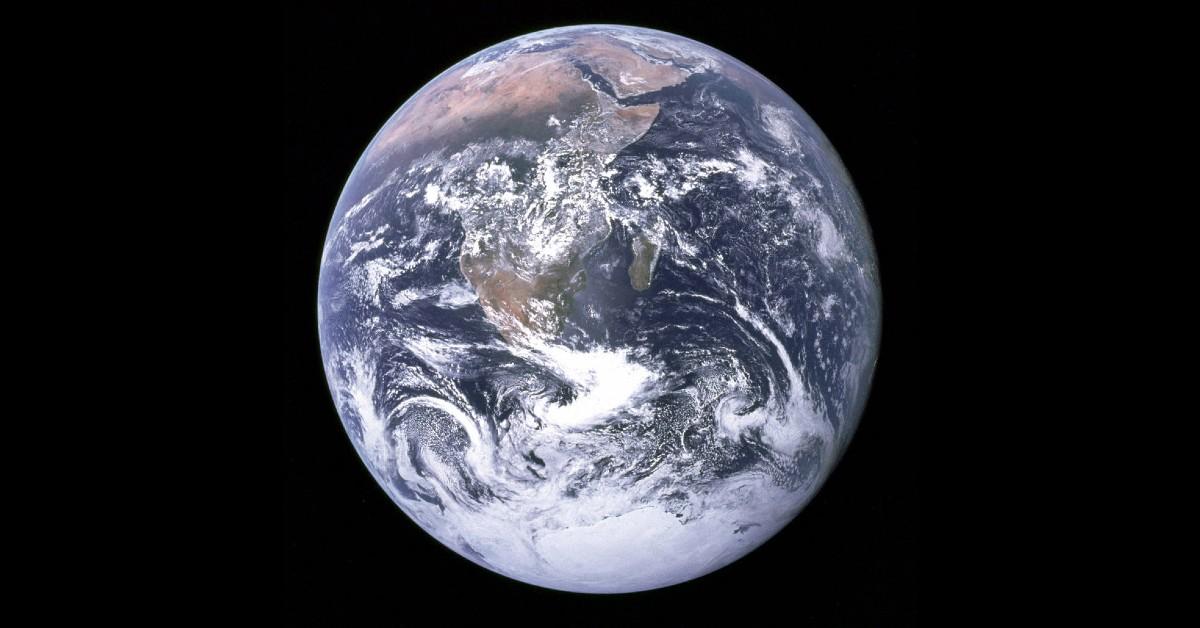Did a Close Encounter with a Star Alter Earth’s Orbit and Increase Temperatures?

The ‘overview effect’ is caused by the sight of Earth from space.
March 6 2024, Published 3:01 p.m. ET
The Earth may have experienced a significant shift in its orbit 56 million years ago due to the close encounter with a passing star, resulting in a 14.4 degree Fahrenheit increase in temperature, according to sources.
This temperature spike, long a puzzle for scientists, has now found a potential explanation in the research conducted by Planetary Scientist Nathan Kaib of the Planetary Science Institute in Tucson, Arizona, and Astrophysicist Sean Raymond of France’s Bordeaux Laboratory of Astrophysics.
Published in The Astrophysical Journal Letters recently, their study titled "Passing Stars as an Important Driver of Paleoclimate and the Solar System's Orbital Evolution" sheds light on this phenomenon.
According to their findings, the close proximity of the passing star to Earth altered the orbits of all planets within the solar system. This alteration coincided with a period known as the Paleocene-Eocene Thermal Maximum.
Kaib emphasized the significance of their discovery, stating, "Our results show that passing stars make detailed predictions of Earth's past orbital evolution at this time highly uncertain, and a broader spectrum of orbital behavior is possible than previously thought."
The correlation between changes in Earth's orbital eccentricity and fluctuations in climate has long been established. Understanding Earth's orbital dynamics during ancient climate anomalies is crucial for accurately identifying their causes.
While changes in Earth's climate often correlate with variations in its orbit around the Sun, tracking the evolution of the entire solar system over time presents more challenges.
The researchers noted the complexity of celestial movements, highlighting that while the solar system is relatively stable, individual orbits can undergo adjustments.
- End Days? Researchers Warn Passing Star Could Cause Interplanetary Collision, Fling Earth Past Pluto
- Are ‘Flat Earthers' Actually Right? New Research Shows There May Be Some Truth in Conspiracy Theorists' Claims
- What Lies Beneath: NASA Scientist Believes Aliens May Have Found 'Perfect' Hiding Spot in Earth's Oceans
Their study focused on an event 2.8 million years ago involving a Sun-like star named HD 7977, which passed exceptionally close to the solar system, penetrating the Oort Cloud — a vast shell enveloping the solar system.
Although the star passed at distances ranging from 4,000 to 31,000 astronomical units, the gravitational influence observed suggests potential impacts on planetary movements.
Never miss a story — sign up for the Front Page Detectives newsletter. Be on the scene the moment news breaks.
Indy100 reported estimates indicating such close encounters occur roughly once every million years within 50,000 astronomical units, with even closer encounters within 10,000 astronomical units occurring approximately every 20 million years.
Through simulations, the researchers consistently observed gravitational effects on planetary orbits when stars passed at closer distances.
"While the effects of stellar passages take tens of millions of years to manifest significantly," the researchers concluded, "the Earth's and other planets' long-term orbital evolution is intertwined with these stellar encounters."
Become a Front Page Detective
Sign up to receive breaking
Front Page Detectives
news and exclusive investigations.
